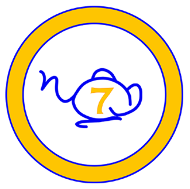Sequens programmatiunculum ad Horologium Romanum pertinens conscripsi ut peregrinatoribus qui ab Imperio Romano ad haec tempora iter faciunt auxilio sit. Immo vero etiam aliis lectoribus forsitan utile esse possit.
That is to say – “Horologium Romanum – The Roman Clock app – was written as an aid to time travellers from the Roman Empire who have chosen to visit the 21st century. Even if you do not fall into that group you may still find it useful.”
 The Roman Clock displays the time and date in Roman numerals, of course, but there’s a lot more going on than that:
The Roman Clock displays the time and date in Roman numerals, of course, but there’s a lot more going on than that:
For those who seriously want to be Roman, the time can be measured Roman style – still a twenty four hour day, but with the twelve hours of day measured from sunrise to sunset, and the twelve hours of night measured from sunset to sunrise. This way of measuring time has three notable properties:
- hours and minutes will be a slightly different length each day, as the seasons pass and the days get shorter or longer.
- hours and minutes will be a slightly different length at different latitudes, even on the same day. This is why the app asks you to let it use your location when you’re using Roman style time – it needs it to work out the sunrise and sunset times.
- you will never be on time for an appointment again
Most people will probably find it convenient to let the Roman Clock app use our modern time system instead.
 The date can be rendered as a modern date (“XX Ivnivs” for 20th June) or as a more comprehensible Roman date (“Ante Diem Kal. XII Ivlivs” for 12 days before the Kalends of July).
The date can be rendered as a modern date (“XX Ivnivs” for 20th June) or as a more comprehensible Roman date (“Ante Diem Kal. XII Ivlivs” for 12 days before the Kalends of July).
The day, the date, the proverb of the day, and the help text can all be in either English or Latin. You’ll use Latin of course – I’ve just provided the English text for other people who are less erudite than you.
Latin text courtesy of the excellent The Latin Translator. For more about the Roman time system and calendar, see Roman Times and Dates.
Purchase now on the App Store or Google Play.


